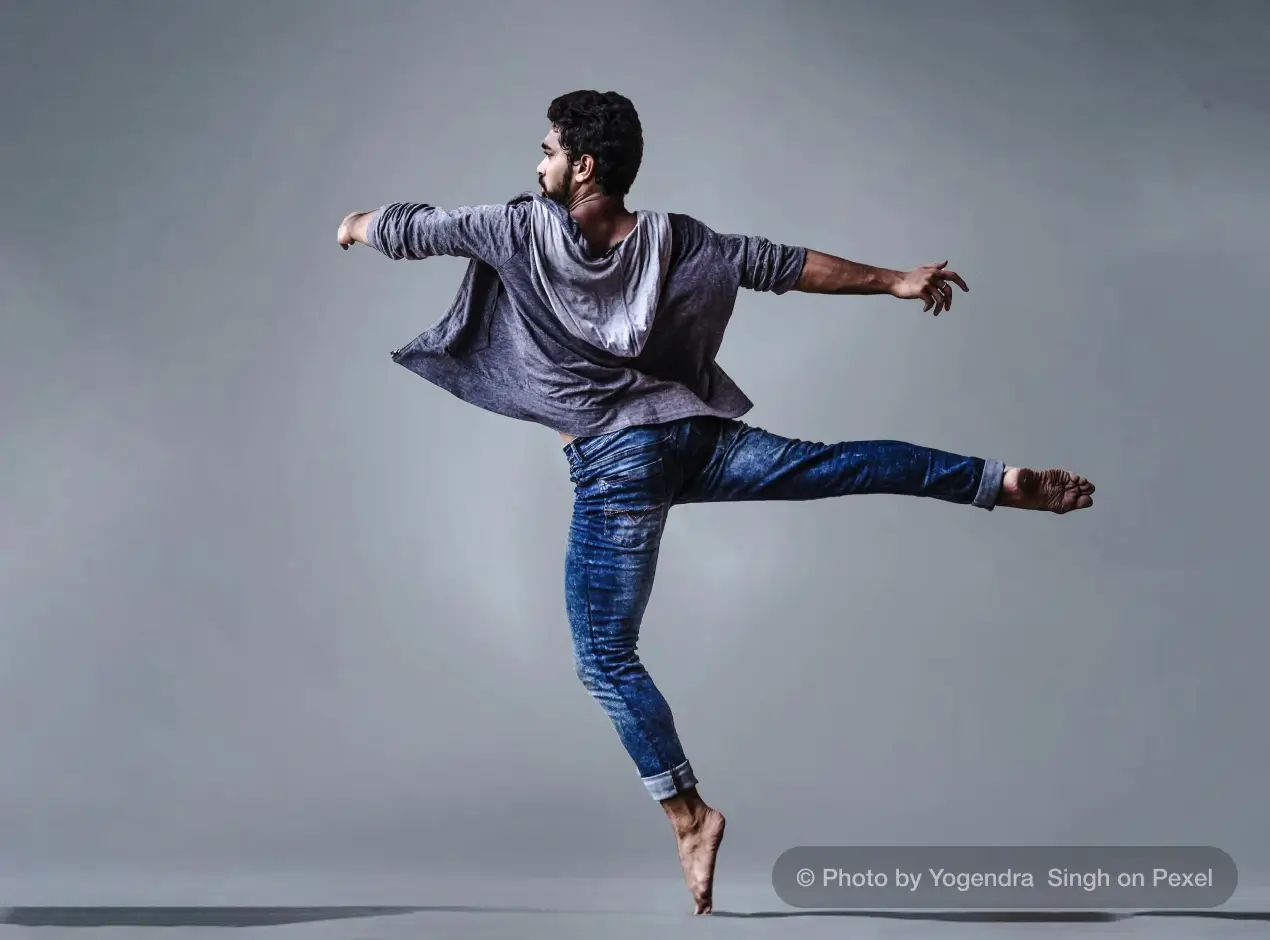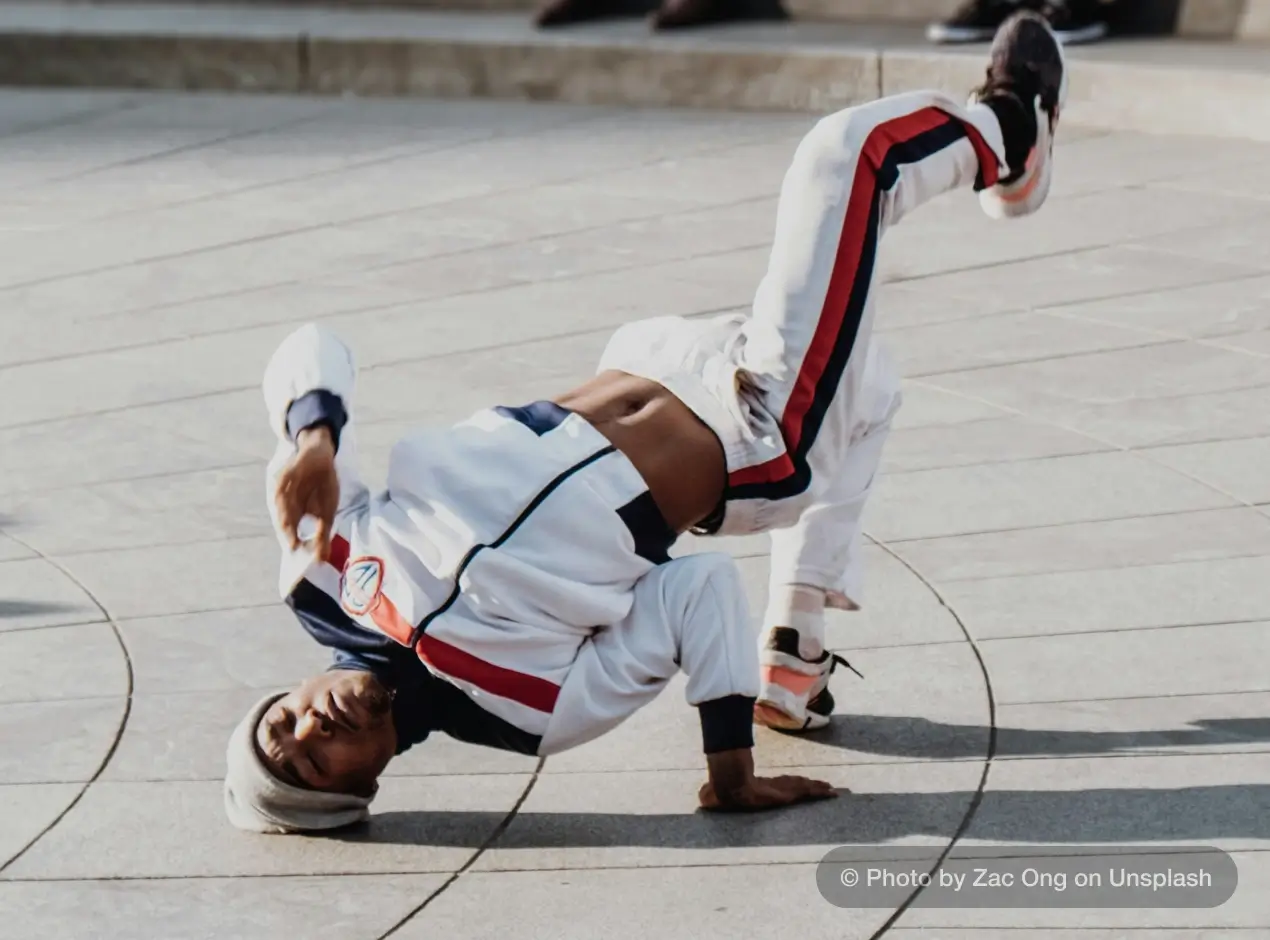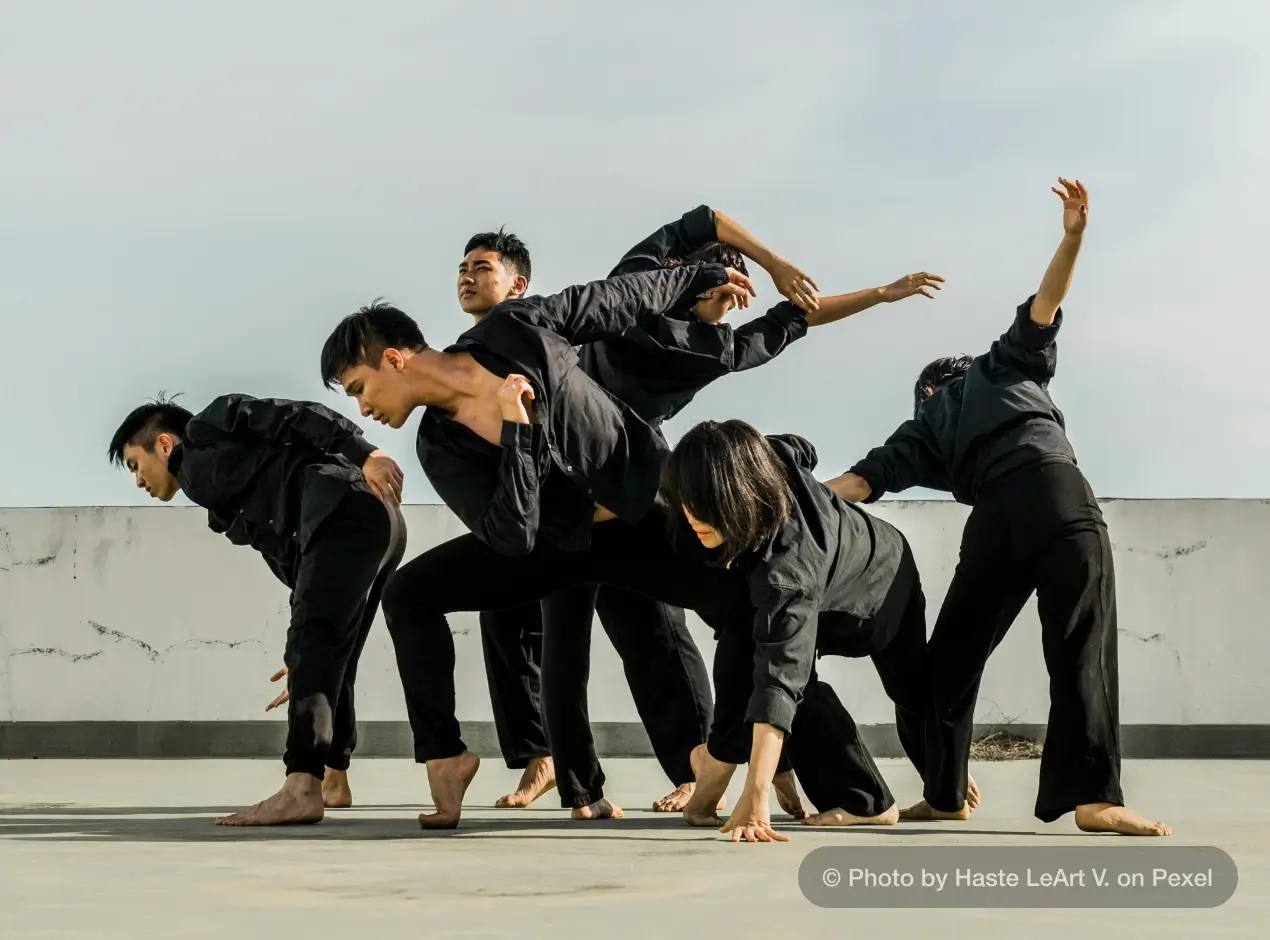Hip-hop Dance Overview
Hip-hop is a style of street dance. It involves several dynamic and energetic dance moves. The various stunts of balancing on the head or one hand upside down with the legs at angular structures. The thrusting and freezing body parts and dynamic movements complement the beats and lyrics of the music.
It takes elements from several dance styles including uprock, locking, popping, breaking, roboting, etc. A quirk mix of all these dance styles, attitudes, and maneuvers gives Hip-hop dance its distinct character.
B-boying breakdancing and uprock came out from the streets of New York City. The other styles such as locking, popping, boogaloo, and roboting were developed by Afro-America dancers in California. Each of these dance forms brought their distinctive flavor and style.
Hip-hop dance style defined the theme of several movies in Hollywood that were recreated in cinemas across the globe. It had an instant connection with the youth.
Hip-hop is more of a mode of expression and a way to make yourself get heard. The very concept of street performances aims to garner public attention. Why else should dancers be standing on their heads in the middle of the street?
To get a deeper insight into Hip-hop's dynamic and over-energetic dance moves, we have to travel backward to the origin of Hip-hop dance.
Origin of Hip-hop
Hip-hop dance developed as a part of the Hip-hop culture. The hip-hop culture started as an art movement that developed in the 1960s. It encompassed art, music, dance, and deejaying.
The Afro-Americans pioneered the Hip-hop culture in the Bronx. New York City. The Latino Americans and the Caribbean Americans followed suit soon after.
The first professional street dance crew was formed in 1970. The most prominent ones among the dance groups - Rock Steady Crew popularized breaking, The Lockers developed the locking dance style, and The Electric Boogaloos made popping popular. These were the three main Hip-hop dance styles which were later enriched by other styles such as uprock, roboting, and boogaloo.
One of the key facilitators of the growth of hip-hop dance was block parties and DJ-led events. These events were getting increasingly popular in neighborhoods like the South Bronx.
Well-known DJs such as Afrika Bambaataa, DJ Kool Herc, and Grandmaster Flash pioneered using turntables and mixing techniques. This created a new form of music known as rap or hip-hop.
The spinning records and highly rhythmic beats motivated people to rap over the beats. Dancers took to the streets to express themselves. Their dance style was heavily influenced by Funk, Disco, Soul, and movies based on martial arts. Slowly, breaking, locking, popping, and other styles started shaping up each with a distinctive flair.
The floor spins, freezes, and acrobatic footwork of breaking (also known as b-boying and b-girling) spread like wildfire among the youth - starting from the streets of New York City to every part of the world. This dance style became a form of self-expression and a way to channel aggression among the youth. It also became a medium to voice social concerns for the marginalized. It opened the gateway for creativity and community-building.
The core elements of hip-hop dance include dance battles and ciphers. Ciphers are circles or gatherings of dancers and spectators in a vibrant and energetic street setting where dance battles or competitions take place.
Apart from the dancers MCs - Master of Ceremony or Mic Controllers play a vital role in the dance battles. These are the rappers who perform pre-composed or impromptu raps. They play a vital role in keeping the dancers motivated and the spectators engaged. They set the tone of the dance battle, build the energy, provide context, and guide the flow of the dance battle while two opponents challenge each other on the dance floor.
Over the years, hip-hop dance continued to evolve and diversify, incorporating elements of jazz, contemporary, and other dance styles while retaining its roots in urban street culture.

Hip-hop dance is a mix of a wide range of dance styles and cultural influences. The captivating dance moves involve intricate footwork of breaking to the fluid isolations of popping and the high-energy grooves of krumping.
It has become a global phenomenon, transcending geographic and cultural boundaries to unite dancers of all backgrounds in a shared passion for hip-hop dance. Though its origins may lie in the streets of New York City, hip-hop dance has grown into a vibrant and dynamic art form with a lasting impact on popular culture worldwide.
Major Influences and Key Dance Styles
Hip-hop had shaped up as a result of several dance styles and creative thought processes coming together. Here is a list of dance styles that helped shape hip-hop dance -
Breakdancing

Breakdancing/ breaking/ B-boying/ B-girling - there are multiple names for the same dance style. It is one of the signature dance moves of hip-hop dance. It bears the influence of several dances and performance routines of Colonial Americans such as - the minuet, Juba, quadrille, and waltz.
For instance, Juda featured men dancing in a circle with one man breaking out of the circle, taking the center to perform, and joining back to the circle to leave the stage for the next participant. This is very similar to how dance battles take place in ciphers.
Signature dance moves such as headspins, leaping in the air, and acrobatic steps inspired by martial arts were a part of impromptu dance improvisations. However, nothing was organized before the 1970s.
The introduction of instrumental records and deejaying played a pivotal role. A rhythmic loop of spinning records and playing the same record in turns and ‘breaks’ - motivated dancers. All these collectively raised the bar for enthusiasm and sparked creativity to give way to what we know as the dance battles in hip-hop.
Locking
The other dance style that emerged to be a signature style and contributed to the overall dance demeanor of hip-hop - is Locking. It is a style of funk dance that originated in Los Angeles in 1960.
Having been pioneered by a dancer named Don Campbell, initially, this dance style came to be known as Campbelllocking. The uniqueness of this dance move is in the freezes at specific positions, a brief pause in that posture, and then again quickly moving to the next position with the beat and the music.
The sudden freezes accompanied by mime acting created a breather after a sequence of highly energetic movements. These help in keeping the spectators engaged.
The locking dance style contributes several postures and dance moves that refined the features of hip-hop dance. Some of the dance moves are listed here -
Alpha
While being in a crouching position, extend one leg up while pushing the torso back. Balance on the one hand on the ground and leg that is folded from the knee.
Rocksteady
Squat and swing the pelvis to one side and back to the center. Stand up and repeat on the other side.
Knee Drop
A sitting posture with the knee pointing inwards making a ‘W’ shape.
Jazz Spilt
A half split with one leg folded to facilitate getting up on the feet smoothly.
The list is an unending one with dynamic and energetic moves such as double lock, up-lock, pacing, and many more. The steps when explained in words sound like mere movements of body parts. But when performed with music, beats, raps, and expressions, these dance moves create an engaging visual treat.
Also Read: 10 Basic Hip-hop Dance Moves Every Dancer Must Know
Popping
Popping is a funk dance style that features quick, sharp movements called "pops" or "hits." These dance moves are characterized by contraction and relaxation of the muscles in rhythm with the music.
Popping is often accompanied by other techniques such as waving, tutting, and strobing, which add visual complexity to the dance.
The key dance moves emphasize quick, sharp contractions and releases of the muscles to create a rhythmic and visually striking effect.
Hitting
Involves sharp and accentuated body movements such as arms, chest, or legs to create an impactful dance move.
Tutting
Creating geometrical shapes using arms and legs.
Waving
It involves smooth and undulating movements across the body parts creating a wave-like visual effect.
Boogaloo
Blending the moves of waving and isolation to create circular motions.
Strobing
Creating a staccato-like effect by freezing in specific poses and then quickly switching over to the next pose.
All of the above along with Animation, Dime Stopping, and many more form the basic vocabulary for the Popping dance style.
Popping remains an integral part of hip-hop dance culture, with practitioners continually innovating and pushing the boundaries of the style.
The sharp and precise movements, the quick hits, and the pops of Popping enhanced the visual aesthetic of the hip-hop dance. It created a foundation for Freestyle that calls for impromptu improvisations. Its influence can also be seen in other dance styles such as breaking, locking, and house dance.
Krumping
Krumping consists of five fundamental moves: stomps, jabs, chest pops, jumps, and arm swings. Unlike choreographed routines, krumping is primarily freestyle, often improvised to music, and commonly performed in battles or sessions rather than on stage.
It stands apart stylistically from other hip-hop dance forms like breaking and turfing, characterized by its aggressive upright movements to fast-paced music. Despite its intensity, krumping does not promote aggression or violence; instead, moves are meant to assert dominance and inspire energy exchange among dancers.
In contrast, turfing, a dance style from Oakland, combines elements of popping and miming, emphasizing storytelling and illusion. While krumping is more freestyle and less precise than turfing, both fall under the umbrella of street dance, sharing origins, freestyle nature, and a focus on battling.
All these and more - including Gangsta Walking, Turfing, and Jerkin have contributed to the evolution of hip-hop dance. Each dance style has a story of its own, a place of origin, progenitors, and growth journey. They bring along their legacies and vital anecdotes that enrich the hip-hop dance form.
The Hip-hop Fraternity Today

In due course of time, the hip-hop dance form evolved into a giant conglomerate. It was enriched by contributions from different dancers and dance forms. From dance battles on the streets of New York City to competitions across several theatres and stages all over the world to movies - the expanse of hip-hop is ever-expanding and all-pervasive.
Movies played a pivotal role in popularizing hip-hop dance. Hollywood movies such as - Breakin’, Beat Street, Wild Style, and Flashdance were some of the early movies that introduced hip-hop dance to the masses. If this was the scene in the 1980s, the later decades saw the rise of competitions and reality shows on television.
Popular Hip-hop Dancers
Michael Jackson
Beyonce
Mr. Wiggles
Les Twins
Buddha Stretch
Shane Spark
